

Do you have a long list of names and addresses that you need to send letters to? The Mail Merge process combines a Word document with a data source to quickly create letters that feel personal.
| Mail Merge Definitions | |||
|---|---|---|---|
| Starting Document | (Main Document) A document that contains the information that is the same for each merged document. The starting document contains the field names for the variable information, like the names and addresses that will be inserted. | ||
| Data Source or Recipients List | A file that contains the information to be inserted into the main document during a mail merge. For example, it has records containing the names and addresses of the people a mail merge letter is sent to. Excel spreadsheets, Access databases, or Word document tables are good examples of data sources. | ||
| Field | A data category that stores a specific piece of information. For example, the field «LastName» would only contain people’s last names. | ||
| Record | A record is an entire set of data fields that relate to a single thing or person. For example, a single record would include a person’s first and last names, address, phone number, and date of birth. | ||
| Merge Field | A merge field is where you want to insert the information from a data source into a main document. Merge fields appear with chevrons (« ») around them. An example would be: Dear «FirstName». | ||
| Address Block | A group of merge fields that make up an address in a mail merge document. For example, a single address is made up of a name, street address, city, state, and zip code. Word can automatically insert all the appropriate address fields at once, so you don’t have to insert the five or six merge fields yourself. | ||
| Greeting Line | A group of merge fields that make up the greeting line of a mail merge document, such as “Dear Mr. McDonald”. Word can automatically insert all the appropriate greeting text, title, and name fields at once, so you don’t have to insert the text and required merge fields yourself. | ||
| Header Row | Data source information is stored in a table. The first row of the table is the header row and contains the field names for the data source. For example, FirstName, LastName, and Address are header rows. | ||
To begin the mail merge process, you first need to choose what sort of document you want to create.
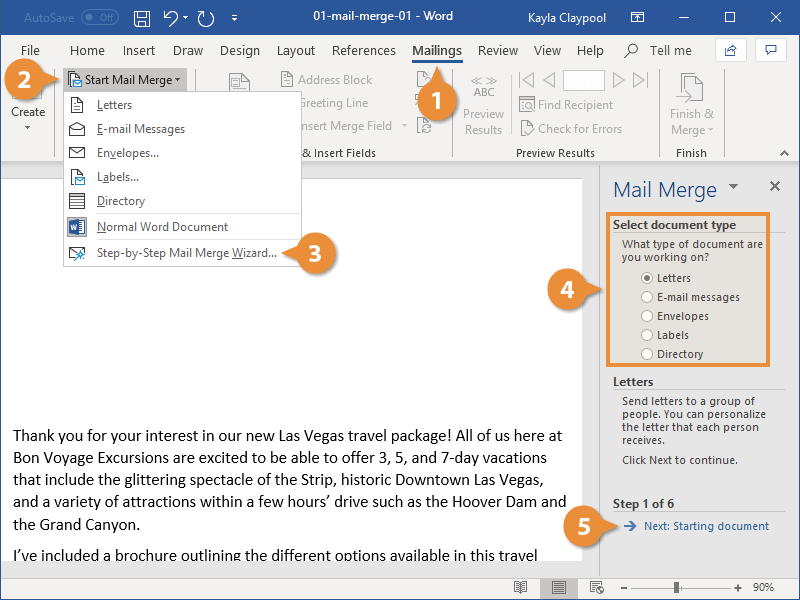
The Mail Merge wizard advances to the next step.
This next step is to select a starting document.
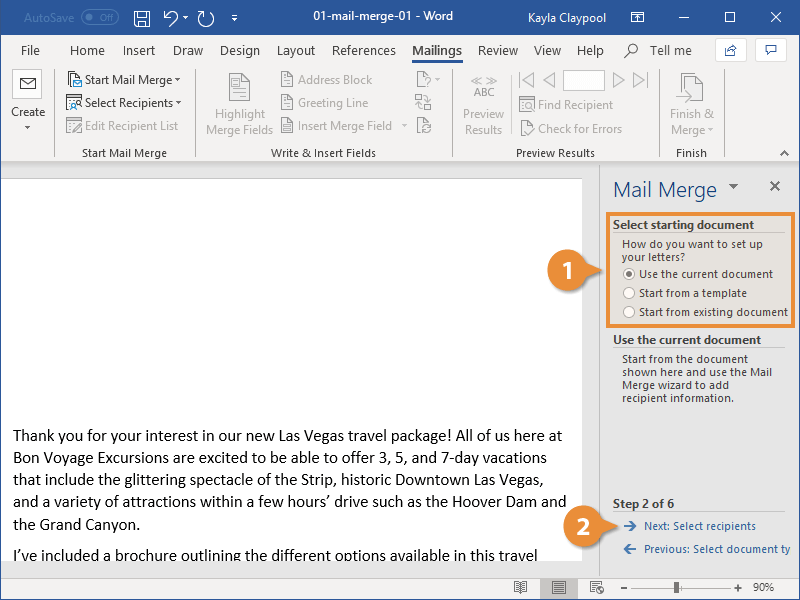
The Mail Merge wizard moves on to step 3.
Now, you will need to choose where you’ll get your list of addresses from. This example uses an existing list from a database, but you can also select Outlook contacts or manually create your own list.
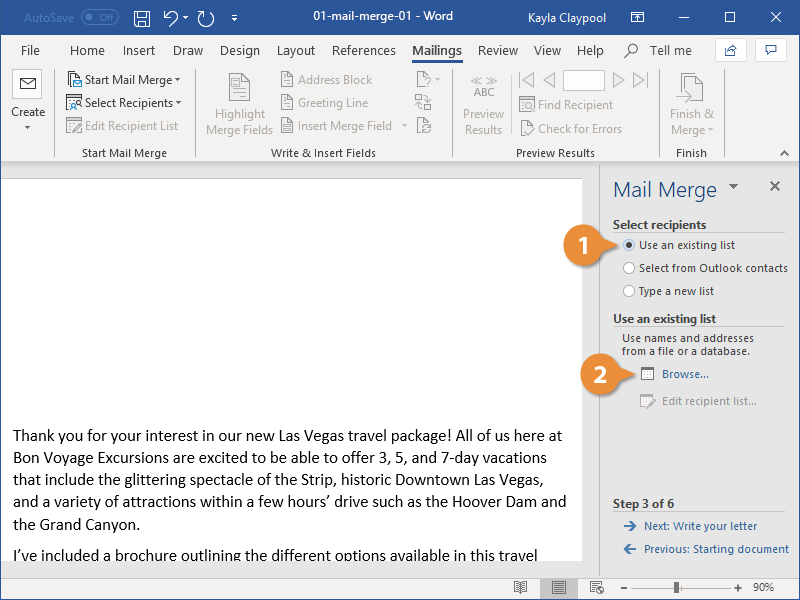
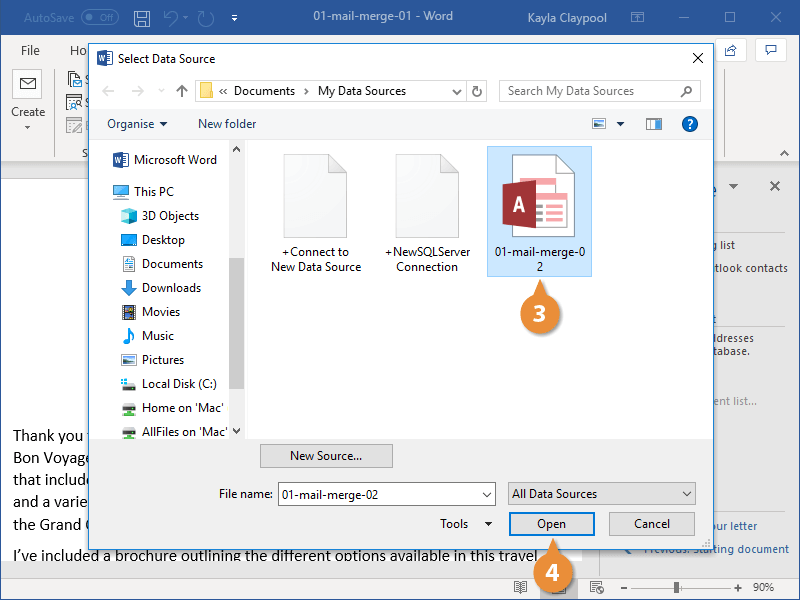
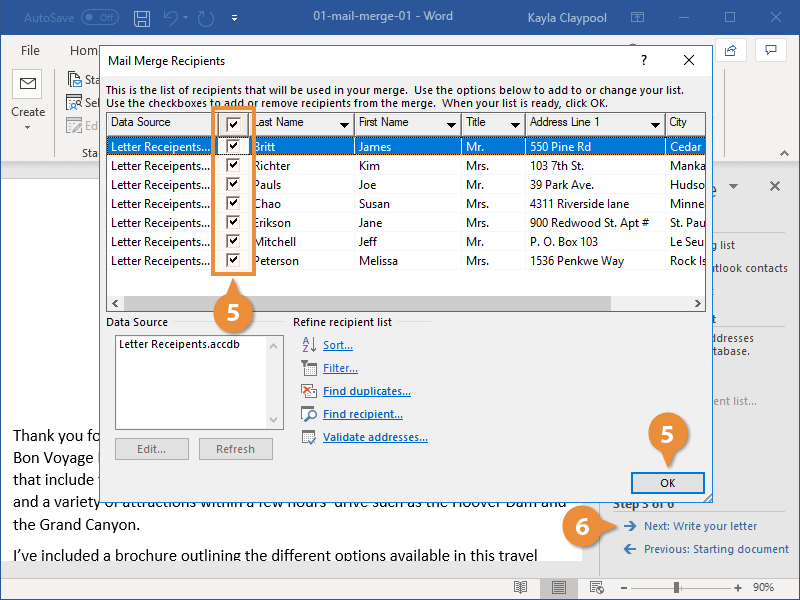
The Mail Merge wizard moves on to step 4.
After the main document is set and the recipient list is connected and edited, you are ready to insert the merge fields in the document. The merge fields are placeholders in the document for unique information from the recipients list.
When you put a merge field in the main document, information from that field will appear for the document that is unique to that recipient.

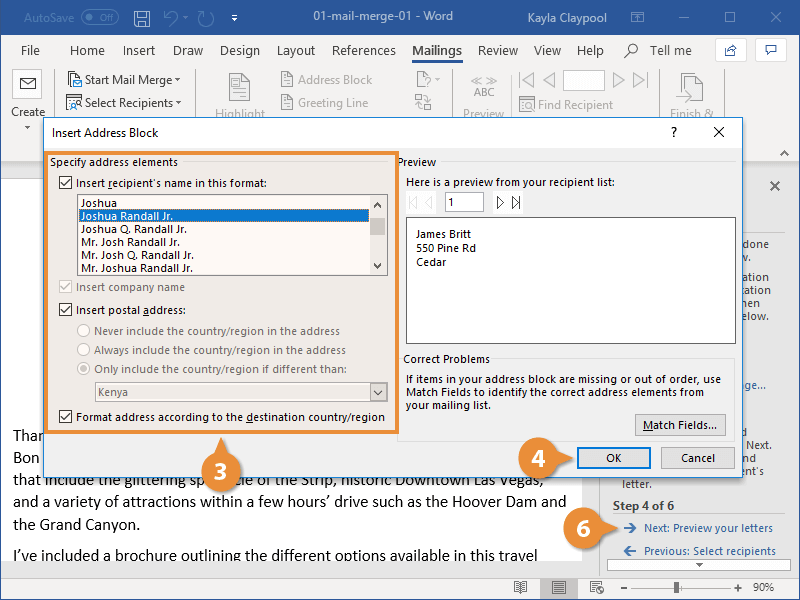
The Mail Merge wizard moves on to step 5.
Sometimes, it is helpful to see what the data will look like once it has been inserted into a document, instead of only viewing the merge field names.
You can easily preview how the mail merge will appear before finishing the mail merge. This is encouraged to make sure the results appear as you want them to.
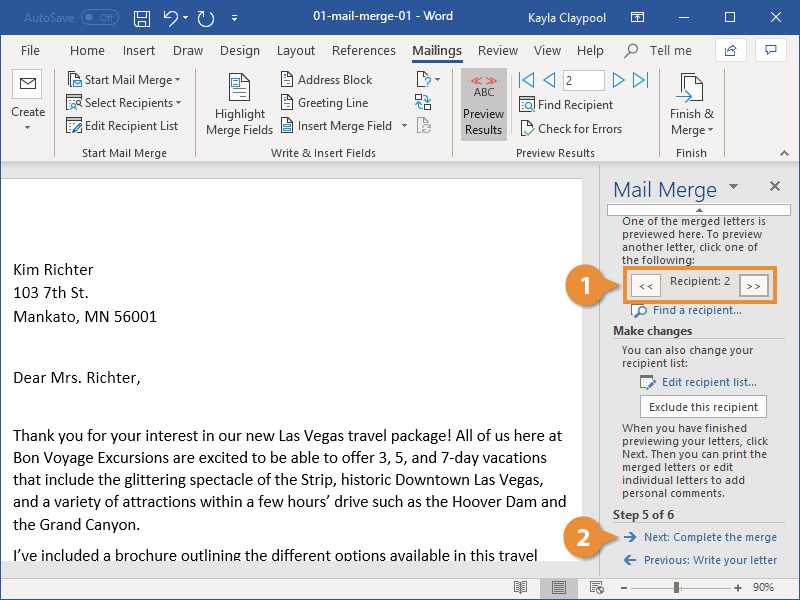
The Mail Merge wizard moves on to the final step.
Once you’ve added the list of recipients and filled out a document with merge fields, the last step is to finish the merge by making a separate version of the document for each recipient.
There are a couple of different ways you can finish the mail merge:
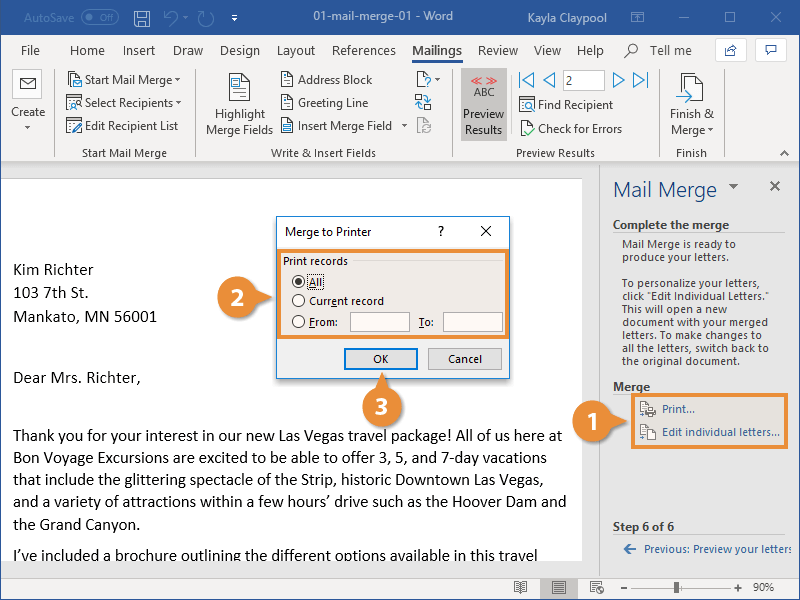
Word merges the main document and the information from the data source into a new Word document, or merges it and sends it to the printer, based on the option you chose.
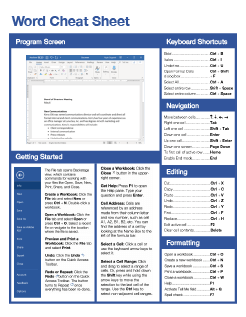
Free to distribute with our compliments; we hope you will consider our paid training.